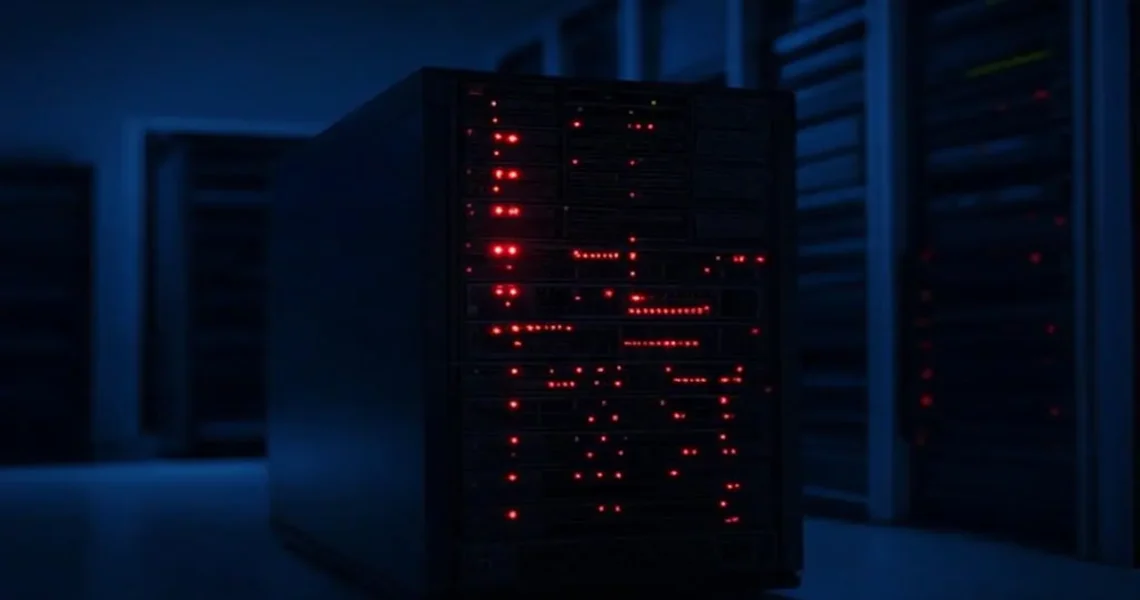Cloudflare Glitch: Global Web Access Disrupted
The internet, a utility many of us implicitly trust and often take for granted as a seamless, always-on service, recently experienced a significant interruption.
This notable “hiccup” in global connectivity was triggered by a technical glitch at Cloudflare, a pivotal internet infrastructure provider. This incident led to the disruption of access for numerous websites for users across the globe, underscoring the delicate interconnectedness of our digital world. When a core service like Cloudflare encounters an issue, the ripple effects can be felt by millions, affecting both personal Browse and critical business operations.
Cloudflare, a company widely recognized for its extensive content delivery network (CDN) and crucial DNS services, swiftly confirmed the root cause of the problem. The issue was traced to its widely popular 1.1.1.1 public DNS resolver. This specific tool is relied upon by millions of internet users worldwide who seek faster and more private Browse experiences than what traditional Internet Service Providers (ISPs) often offer. The malfunction of this resolver directly resulted in widespread connectivity problems, manifesting as slow loading times, inaccessible websites, and general frustration among users.
Reports detailing sluggish internet performance and completely inaccessible websites began to surface on July 14, 2025. These complaints quickly mounted, signaling a significant disruption and prompting widespread frustration, particularly among individuals and businesses whose daily operations are heavily dependent on Cloudflare’s services. As reported by 9to5Mac, a reputable technology news outlet, Cloudflare moved quickly to acknowledge the issue.
The company publicly assured its users that it was actively “working on a resolution to restore normalcy.” This incident serves as a potent reminder of the critical and often underappreciated role Cloudflare plays in the global digital ecosystem. Even a relatively brief outage in such a foundational service can send significant ripples across diverse industries, from e-commerce to remote work, highlighting the delicate balance of modern internet infrastructure.
The Unseen Backbone: Understanding DNS and Cloudflare’s Role
At the very heart of this recent disruption lies the fundamental mechanism of the internet: the Domain Name System (DNS). Often described as the internet’s phonebook, DNS is responsible for translating human-readable website names (like “https://www.google.com/search?q=google.com”) into machine-readable Internet Protocol (IP) addresses (like “172.217.160.142”). Without this translation, your browser simply wouldn’t know where to find the website you’re trying to reach.
Cloudflare’s 1.1.1.1 DNS resolver, launched in 2018, was specifically designed to offer an alternative to the often slower or less privacy-focused DNS options provided by traditional ISPs. Its promise was clear: speed and privacy for every internet query. When this resolver functions correctly, it performs this crucial translation efficiently, ensuring users can access websites without delay, leading to a smooth Browse experience.
However, when unforeseen issues arise, as they did on July 14, the consequences are immediate and far-reaching. If the 1.1.1.1 resolver fails to perform this essential translation, it effectively “breaks the link between users and their desired online destinations.” This is precisely what happened during the recent glitch. Users would type in a website address, but their devices wouldn’t receive the corresponding IP address, resulting in an inability to connect to the site.
The scale of the outage, while not immediately fully quantified by official figures, appeared to be significant. Reports from frustrated users quickly indicated that affected individuals spanned multiple regions across the globe, suggesting a widespread impact rather than an isolated localized problem.
Social media platforms, the modern-day town square for real-time reactions, quickly “buzzed with complaints.” These public expressions of frustration vividly highlighted how reliant modern businesses and individuals have become on such underlying internet infrastructure. Small businesses, large corporations, remote workers, and casual browsers alike all depend on these foundational services for their daily digital interactions.
Cloudflare’s transparency in acknowledging and addressing the problem, as noted by technology reports like 9to5Mac, offered some level of reassurance to the affected users. However, the incident also served as a stark reminder, raising pertinent questions about the vulnerabilities inherent in highly centralized internet services. When a single point of failure, even a temporary one, can impact such a vast segment of the internet, it prompts critical discussions about the need for greater decentralization and redundancy in key online systems.
The Pervasive Reach of Cloud Services: A Growing Dependency
Cloudflare’s expansive role in the digital landscape extends well beyond merely resolving DNS queries. The company provides a comprehensive suite of services that are integral to the modern internet. These include robust security solutions that protect websites from malicious attacks, performance optimization tools that ensure fast loading times, and sophisticated protection against a myriad of cyber threats, notably large-scale DDoS (Distributed Denial of Service) attacks. Millions of websites, from small blogs to major corporations, leverage Cloudflare’s infrastructure to enhance their online presence, secure their data, and ensure seamless user experiences.
This recent incident serves as a stark and undeniable reminder of the internet’s inherent fragility when key underlying players encounter technical difficulties. The interconnectedness of the web means that a problem at one critical node can cascade throughout the entire system, affecting downstream services and end-users. For industries where online presence is paramount, such as e-commerce, digital media, and the broader technology sector, the stakes are particularly high.
In these sectors, even a brief period of downtime directly translates to significant lost revenue, damaged brand reputation, and rapidly eroded customer trust. The financial and reputational impact of such outages can be substantial, emphasizing the immense reliance placed on infrastructure providers like Cloudflare.
Adding another layer of concern, this specific outage occurred at a time when Cloudflare itself had reported a surge in cyber threats. Its Q2 2025 DDoS threat report indicated an alarming trend: the number of attacks blocked this year had already surpassed the total observed in all of 2024, as extensively covered by SecurityWeek. While Cloudflare explicitly stated that the recent 1.1.1.1 resolver issue was unrelated to a cyberattack, the timing of the glitch amplified existing concerns.
It heightened awareness about the overall stability of internet infrastructure amidst a rapidly growing and pervasive digital reliance. This context underscores that the internet’s resilience is being tested not just by technical glitches, but by an escalating landscape of sophisticated cyber threats, making every incident, whether malicious or accidental, a cause for wider scrutiny.
Looking Ahead: Building Greater Resilience in Internet Architecture
As Cloudflare diligently worked to resolve the issue with its 1.1.1.1 resolver, the incident naturally prompted a broader and more critical discussion about redundancy and resilience within the internet’s fundamental architecture. Experts and industry insiders are increasingly advocating for more robust and diversified approaches to internet infrastructure. One primary recommendation centers on diversifying DNS providers.
Relying on a single DNS service, even one as reputable and robust as Cloudflare’s, introduces a single point of failure. By utilizing multiple DNS providers, or implementing a strategy of failover DNS, organizations can ensure that if one service experiences an outage, traffic can automatically reroute through another, maintaining uninterrupted access.
Investing in failover systems is another crucial strategy being discussed. Failover systems are designed to automatically switch to a backup system when the primary system fails. For critical internet services, this could involve having redundant servers, data centers, or network paths ready to take over in the event of a primary system malfunction. Such proactive measures are seen as essential for mitigating the impact of future disruptions.
Cloudflare’s prominent status as a linchpin of online connectivity means its operational performance is constantly under intense scrutiny from businesses, users, and the wider tech community. This particular outage, though temporary, will likely spur renewed calls for enhanced safeguards across the entire internet ecosystem. The incident serves as a powerful case study, encouraging greater investment in distributed systems, more robust backup protocols, and an overall shift towards architectures that prioritize resilience over centralized efficiency.
For the vast number of users and businesses affected by the recent glitch, the immediate priority was the full restoration of services. While these types of incidents are typically temporary, their occurrence highlights an uncomfortable and crucial truth about our digital world: the internet, for all its unparalleled advancements, pervasive reach, and transformative power, remains inherently vulnerable to the occasional breakdown of its foundational components. It is a complex, intricately woven network of technologies, and even a minor fault in a critical thread can lead to significant unraveling.
As humanity progresses deeper into a hyper-connected era, where virtually every aspect of personal life, commerce, and global communication relies on digital channels, ensuring the robustness and unwavering reliability of services like Cloudflare’s will be absolutely paramount to sustaining the burgeoning digital economy. The incident serves as a vital lesson, emphasizing that continuous investment in infrastructure, constant vigilance against vulnerabilities, and a commitment to redundancy are not merely good practices but essential requirements for the future of the internet.






